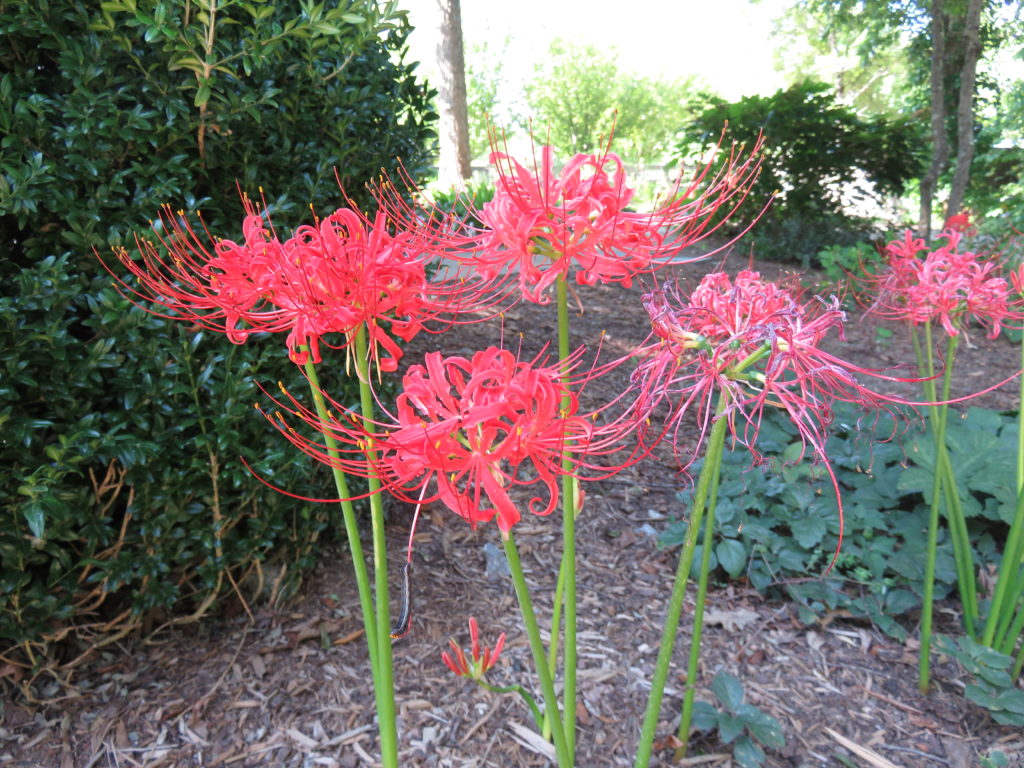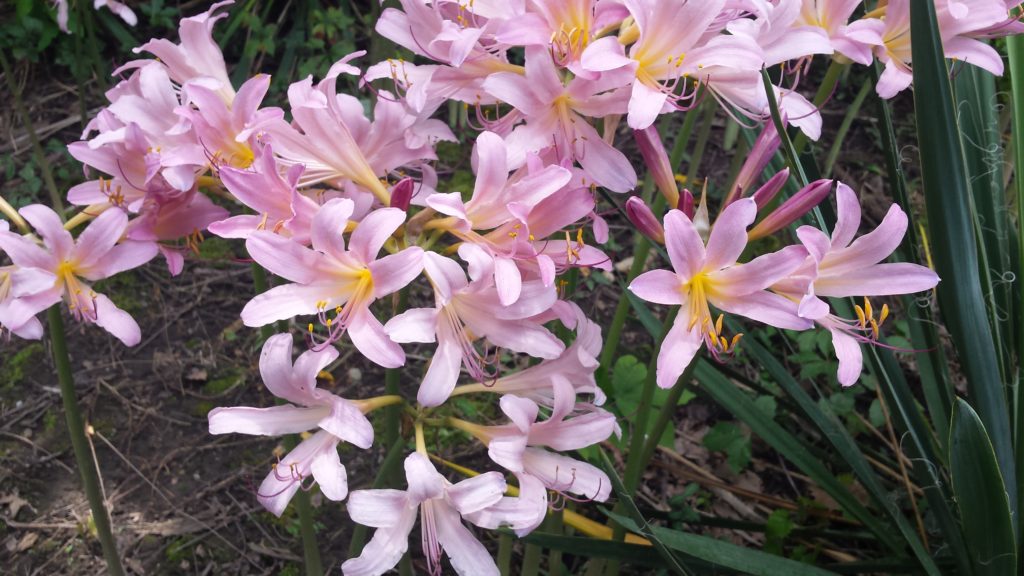
Add a bit of unexpected beauty to your garden in late summer with surprise lilies (Lycoris spp.), aka spider lilies, resurrection lilies, magic lilies, and naked ladies. (Zones 4-9). Along coastal areas of the southern U.S., they are called “hurricane lilies”. The most popular is red spider lily (L. radiata), a long-lived heirloom flower in Southern gardens, often seen growing in old gardens and cemeteries.
These bulbous plants are in the amaryllis family (Amaryllidaceae) and have been cultivated for centuries in Japan. In some years, if Southern winters are unusually mild winters, bloom stalks may not pop-up. But be patient -blooms should return the following year.
Surprise lilies thrive in full sun to light shade and most soils. Keep the soil somewhat dry when the bulbs are dormant. They require no fertilization and are not troubled by pests. Anytime, in August or early September, surprise lilies come into bloom.
Plant 10 to 12 bulbs scattered over at least 5 linear feet of bed area. Culturally, surprise lilies behave like other late season bloomers like fall crocus and colchicum. They send up strap-like leaves in spring. The leaves create energy for the bulb and should not be disturbed, allowed to naturally die back to the ground by late May.

Three easily found species:
L. radiata – the most common form with bright red spidery blooms.
L. sprengeri – mixed shades of blue and pink that change as petals age.
L. squamigera – 5-7 pink, four-inch-long trumpet blooms stand atop 2-foot-tall stems.

 Posted in
Posted in 
